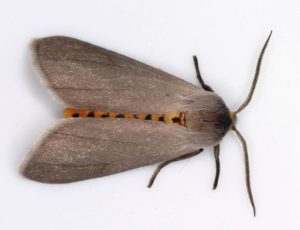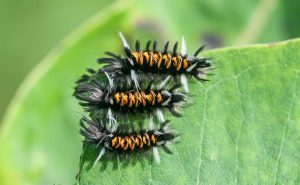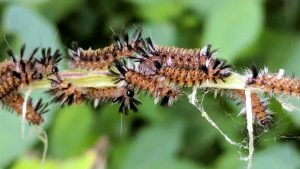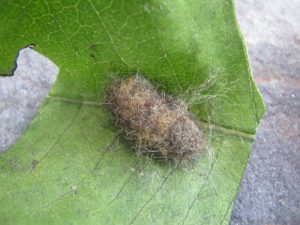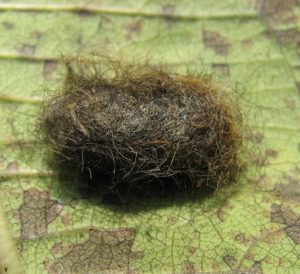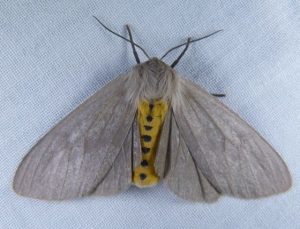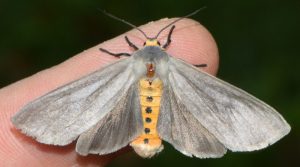Milkweed Tussock Moth (Euchaetes egle)
The Milkweed Tussock belonging to the Erebidae family was described in 1773 by British collector Dru Drury. It has a wide range, occupying different parts of North America. These moths acquire the name milkweed from their host plants. The larvae and even the adult moths are equipped with chemical defenses, obtained from the milkweed plants, which have toxic substances. This makes them poisonous for their potential predators, yet they stand beneficial enough for the ecosystem.
en.wikipedia.org
Scientific Classification
- Family: Erebidae
- Genus: Euchaetes
- Scientific Name: Euchaetes egle
Description and Identification
Caterpillar
The larva grows to about 3.5 cm with the early instars being gray and a little hairy. Then, they appear like yellow tubes with black heads. As the caterpillar matures and reaches the late instar stage, its body is marked with orange, black, and white stripes. Later instars can be spotted alone or in a group of 2 – 10 on their host plants.
Adult Moth
Sexual Dimorphism: Not prominent
Color and Appearance: Their wings, whether opened or closed, mostly have a dull gray coloration without prominent markings. However, some specimens have a faint, dark line on the forewing.
Besides this, they also have a yellow hairy abdomen, with black dots arranged in rows on the dorsal region.
Average wingspan: 3.2 – 4.3 cm
Flight pattern: Erratic
Season: September – May
Eggs
The eggs are round and pale grey, mostly laid underneath milkweed leaves in June.
Quick Facts
| Other Names | Milkweed tiger moth |
| Distribution | Maine, Texas, Florida, Minnesota, and parts of southern Canada, |
| Habitat | Near wet meadows or swamps, especially where milkweed mostly grows |
| Predators | Bats, beetles, spiders |
| Lifespan of Adults | Not recorded |
| Host plants | Milkweed and dogbane |
| Adult diet | Mainly nectar |
Did You Know
- This species is alternately referred to as tiger moth since they are a part of the Arctiini (tiger moth) tribe. Secondly, the larva’s white, orange, and black shades are reminiscent of a tiger’s coloration.
- The male moth uses its tymbal organs for calling females as well as defending themselves against their predators.
Scientific Classification
- Family: Erebidae
- Genus: Euchaetes
- Scientific Name: Euchaetes egle

